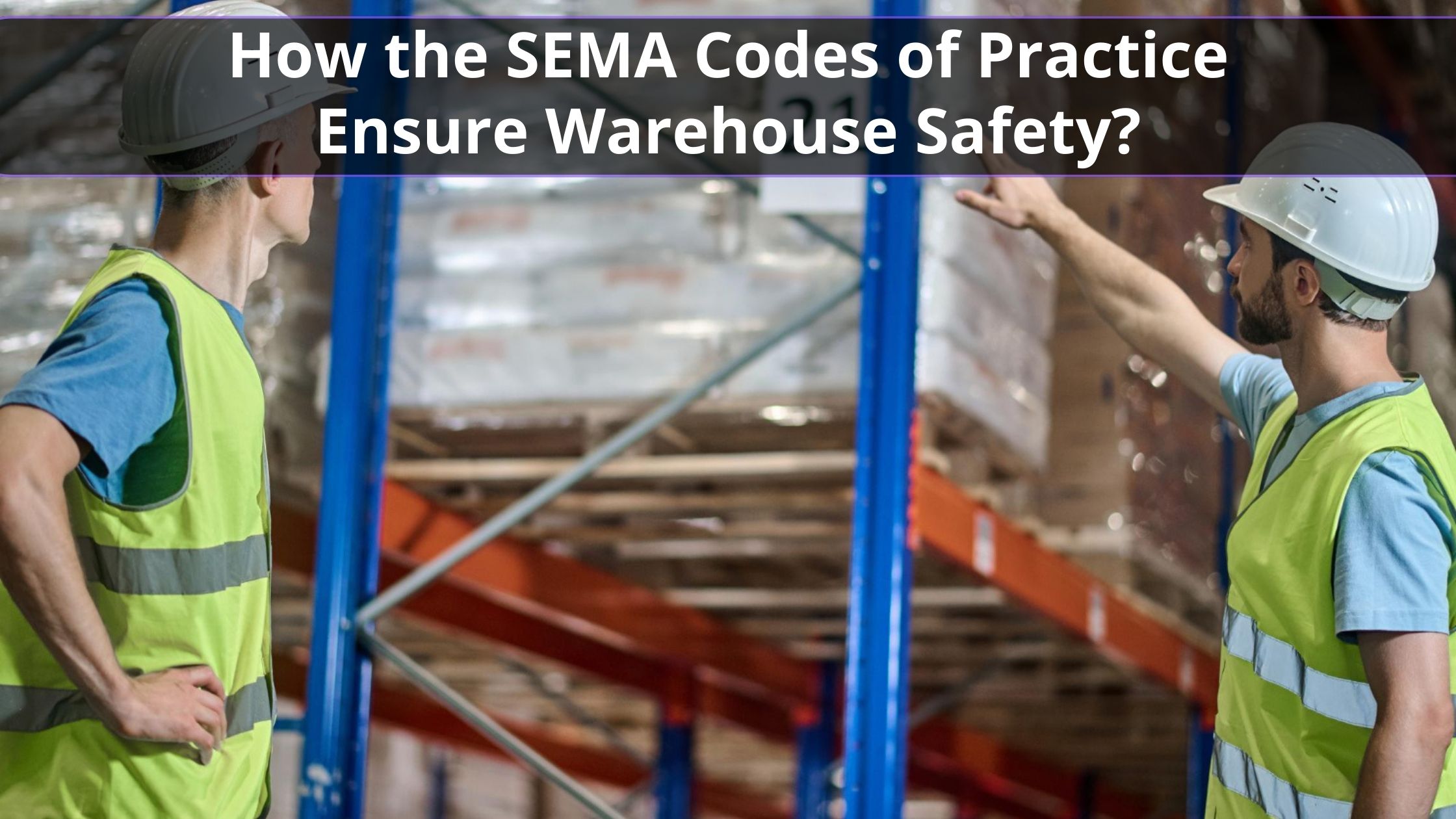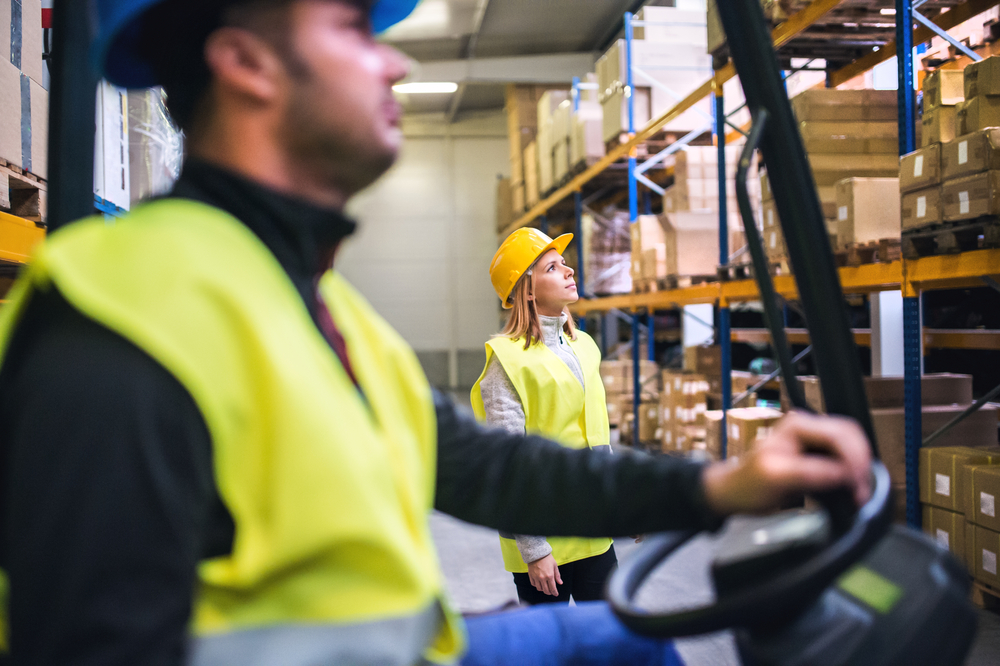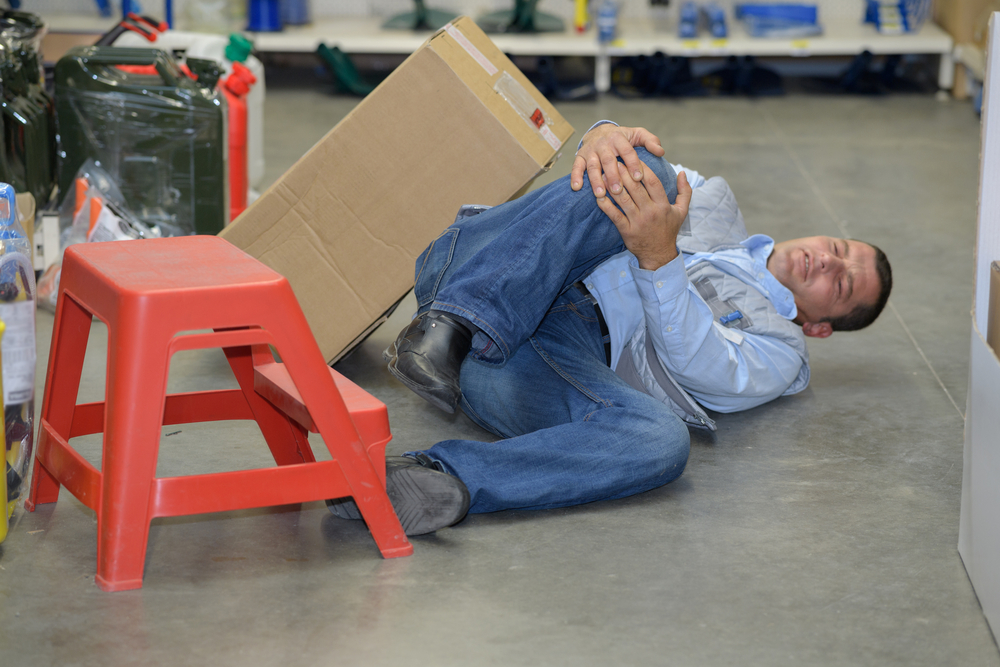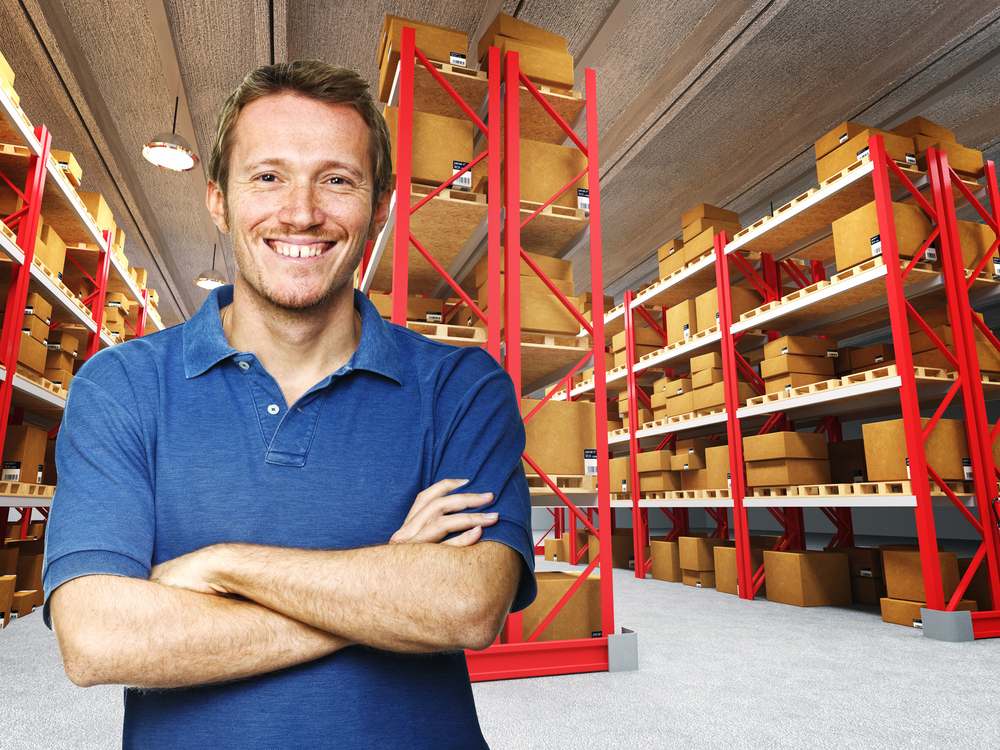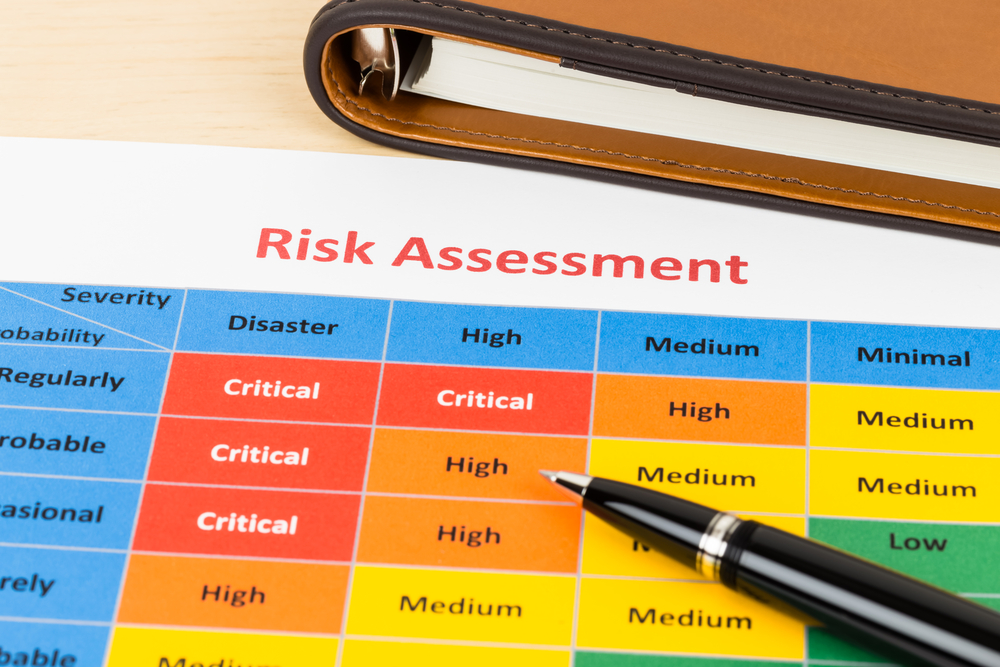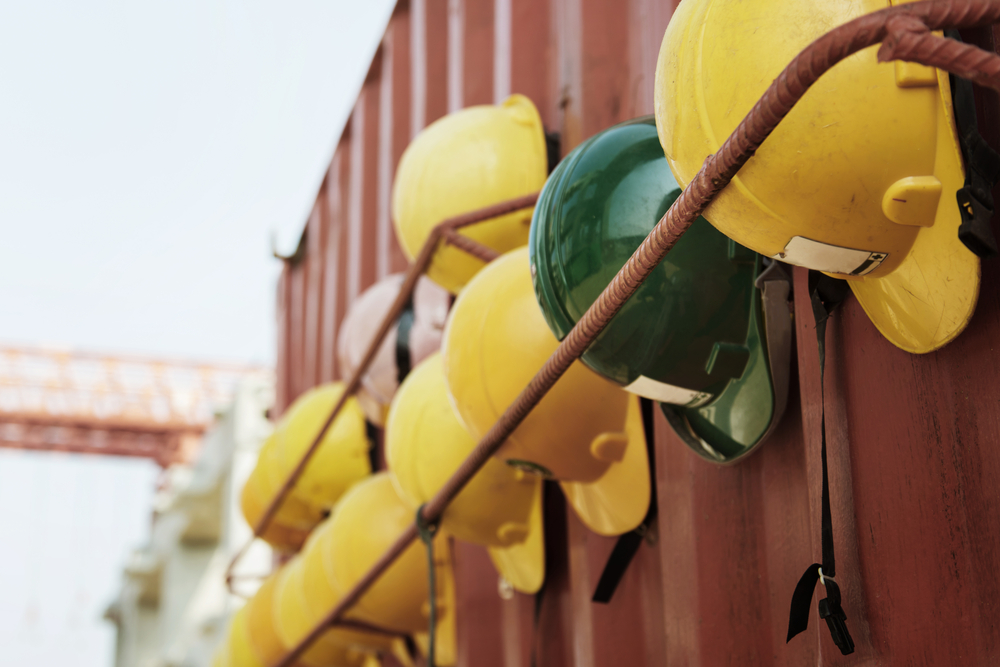How to Become a SEMA Approved Racking Inspector?
SEMA, the Storage Equipment Manufacturers’ Association, plays a vital role in warehouse safety, particularly through its SEMA Approved Racking Inspector (SARI) program. SARIs are professionals tasked with ensuring the safety and compliance of racking systems in warehouses and other types of storage facilities – their expertise is key when it comes to preventing accidents and maintaining efficient operations.
The role of the SARI (SEMA Approved Rack Inspector) demands sound observational skills, a robust understanding of storage equipment/applications and a keen eye for detail. Additionally, an Inspector must be able to assimilate technical information and communicate findings clearly and concisely. As such the SEMA Approved Rack Inspector course requires candidates to possess a good educational background with demonstrable literacy and numeracy skills together with appropriate industry experience.
This article will explore the journey to becoming a SARI, delving into the prerequisites, training, certification, and the various aspects of building a career in this essential field, as well as highlighting its significance in the broader context of warehouse management and safety.
The Prerequisites
To pursue a career as an SEMA Approved Racking Inspector, certain foundational prerequisites are essential.
Applicants should ideally be qualified to HNC/HND level in an engineering related subject and have two to three year’s‘ Gaining Practical Experience’ (see below) working with racking systems including completing racking inspections and other work related to maintaining the safety of racking systems.
Key skills for this role include meticulous attention to detail, a solid grasp of safety standards, and the ability to assess and manage risk. A deep understanding of warehouse operations and a commitment to safety are also crucial, ensuring that SARIs are well-equipped to uphold and enforce safety standards.
The SEMA Training Program
The SEMA training program is a comprehensive course designed for aspiring rack inspectors. Typically spanning several days, the program covers a broad range of topics essential for the role – including the fundamentals of racking systems, risk assessment techniques, and the latest safety standards.
Trainees also learn about SEMA’s codes of practice and guidelines. The focus is on both theoretical knowledge and practical skills, ensuring inspectors are thoroughly prepared for real-world scenarios.
The training concludes with an assessment, evaluating the participants on their grasp of the material and their ability to apply it in a practical setting. Once certified, the student will be able to perform SEMA-approved racking inspectors.
The SEMA Certification Process
The certification process to become an SEMA Approved Racking Inspector comprises several steps. It begins with the successful completion of the SEMA warehouse safety training program – following this, candidates undergo a series of examinations, testing their theoretical understanding of racking systems and safety protocols. Practical assessments are also a core part of the certification, where candidates must demonstrate their ability to inspect racking systems effectively and identify potential hazards.
Only upon passing these assessments does a candidate earn the SARI certification. This rigorous process ensures that SARIs possess the necessary knowledge and skills to perform their duties with proficiency and accuracy.
Gaining Practical Experience
Practical experience is invaluable for an SEMA-approved rack inspector – it’s recommended that aspiring inspectors seek opportunities in diverse warehouse settings to gain hands-on experience with various racking systems. This can include working alongside experienced inspectors, participating in safety audits, or engaging in routine inspections under supervision.
Gaining exposure to different types of storage facilities enhances an inspector’s ability to identify and address a wide range of potential issues – this real-world experience is the best way to develop the practical skills and judgment necessary to excel as a SARI, complementing the theoretical knowledge gained through training and certification.
Continuing Professional Development
Continuous Professional Development (CPD)is imperative for SEMA Approved Racking Inspectors as the field of warehouse safety is dynamic, with frequent updates to safety standards and the introduction of new technologies. SARIs are expected to engage in ongoing education to stay current with these developments – in fact, SEMA requires inspectors to gain a minimum number of CPD Points each year in order to renew the SARI certification.
This commitment to continuous learning ensures that SARIs maintain a high level of expertise and are always equip with up-to-date knowledge and skills, not only enhancing their professional competency but also ensuring the highest standards of safety in warehouse management.
Building a Career as a SARI
A career as a SEMA Approved Racking Inspector offers diverse and rewarding opportunities. With certification, individuals can explore roles in warehouse safety management, work as independent consultants, or join inspection agencies, for example. SARIs often have the opportunity to work across various industries, given the universal need for safe storage solutions, and as experts, they may also transition into advisory roles, helping design safer storage systems or developing safety protocols.
The career trajectory for a SARI also includes potential leadership roles in safety management and training, making it a fulfilling career choice for those passionate about workplace safety and efficiency.
Challenges and Rewards
Working as a SEMA Approved Racking Inspector comes with its unique set of challenges and rewards. Inspectors often face complex inspection scenarios and must stay updated with evolving safety standards – and the responsibility of ensuring warehouse safety can be as demanding as it is rewarding.
Overcoming these challenges brings a sense of accomplishment, knowing that the work the inspector does is directly contributing to preventing accidents and maintaining safe work environments. The role also offers intellectual satisfaction, as it requires constant learning and adaptation.
What next?
Becoming a SEMA Approved Racking Inspector is a journey that combines education, hands-on experience, and a commitment to ongoing professional development. The process, starting from meeting the prerequisites to achieving and maintaining certification, is design to equip inspectors with the skills and knowledge needed to excel in this field. At SEE Racking Inspections, we know exactly what it takes to achieve and maintain the certification – because we are SEMA-approved racking inspectors ourselves.
The role of a SARI is critical in ensuring the safety and efficiency of warehouse operations, and their expertise significantly contributes to preventing workplace accidents. As the demand for safe storage solutions grows, the importance of SARIs in maintaining high safety standards in warehouses cannot be overstate, making it a vital and fulfilling profession.


